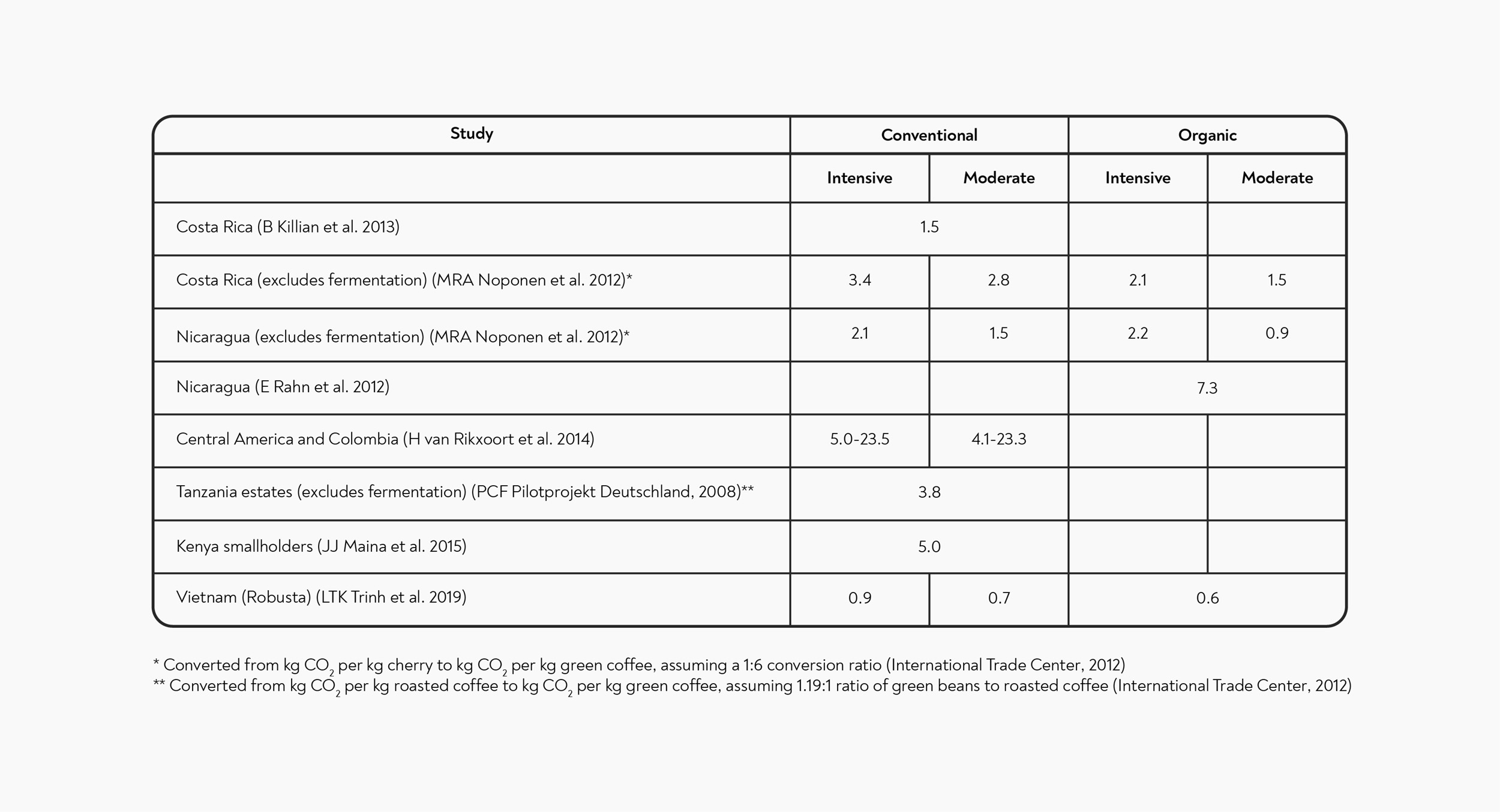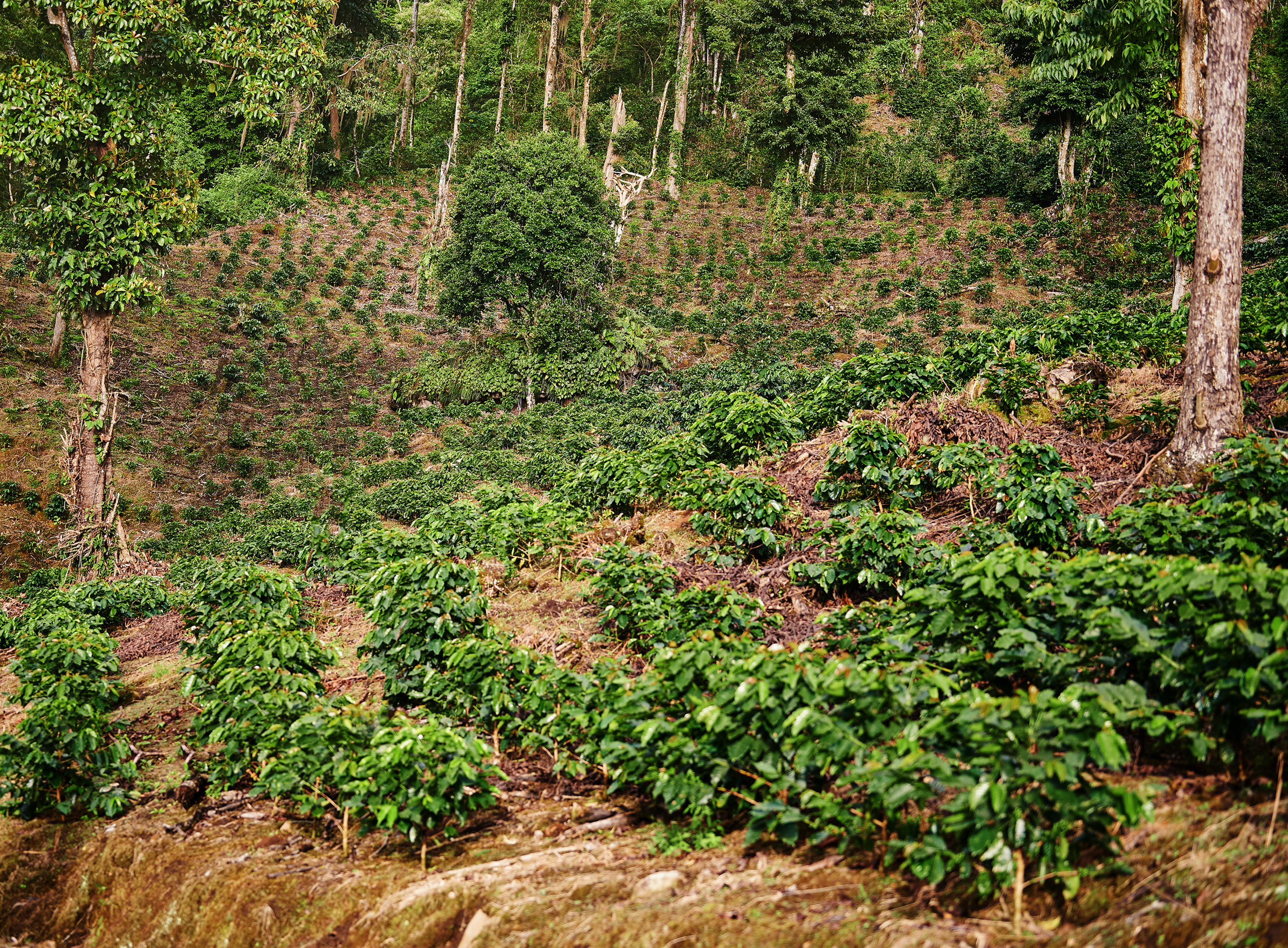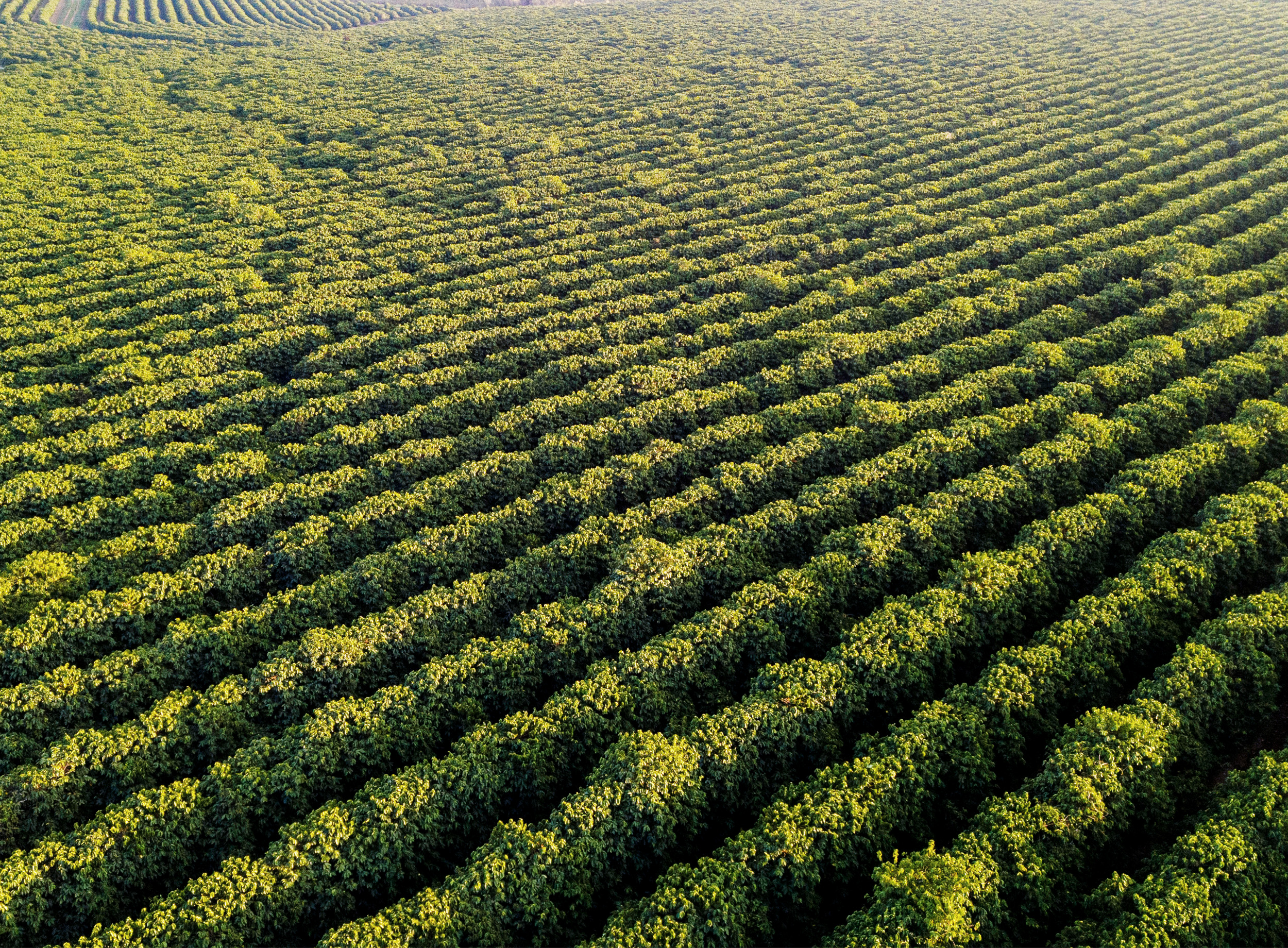In order to continue with our life-cycle analysis (LCA), we need to choose a best estimate for the GHG emissions related to coffee growing and processing. As we’ve seen in the last few lessons, this is a difficult proposition, and the answer can vary considerably depending on how the coffee is grown and processed.
Shade-grown coffee (left) compared to an intensive, full-sun coffee farm (right). Growing coffee under shade is associated with numerous environmental benefits.
All other things being equal, we’d expect high-quality speciality coffee to be more environmentally friendly than the average commercial coffee, because many factors that make coffee sustainable also promote high quality. We could find only one study specifically analysing the environmental impact of a speciality-focused farm, Finca Vista Hermosa in Guatemala (B Salinas, 2008) — but this study isn’t focused on GHG emissions, so it can’t be used as a point of comparison. It does, however, demonstrate a few points typical to speciality coffee farms: no pesticides or fungicides are used, in part because the high altitude of the farm makes them unnecessary. The altitude and rainfall also mean that no irrigation is needed. The farm uses composted coffee pulp as fertiliser, which means that it needs about 30% of the typical amount of chemical fertiliser used at coffee farms in Guatemala. It also has good water management, reusing the water from the washing process and treating the wastewater in an evaporation lagoon.
Nonetheless, even within speciality coffee, the studies that we’ve examined so far suggest that our starting point, Killian et al.’s (2013) figure of 1.5 kg CO2 per kilogram of green coffee, is a low estimate. To help you choose a suitable figure for the emissions related to the production of green coffee to use in your own analysis, take a look at a summary of the results from the life-cycle analyses we’ve mentioned in this course:
 Estimates for the carbon footprint of coffee production. Because of the different ways of classifying farms into intensive and moderate, organic and conventional, the results are not directly comparable between different studies, but we have grouped them in this way for convenience. All figures are given in kg CO2 لكل كيلوغرام من القهوة الخضراء.
Estimates for the carbon footprint of coffee production. Because of the different ways of classifying farms into intensive and moderate, organic and conventional, the results are not directly comparable between different studies, but we have grouped them in this way for convenience. All figures are given in kg CO2 لكل كيلوغرام من القهوة الخضراء.
منظومة اتخاذ القرار - (قيد الترجمة)
دورة إلكترونية مجانية تلقي نظرة ناقدة على تأثير المناخ في صناعة القهوة
بدأنا في باريستا هاسل في إعداد دورة تدريبية مجانية تحت اسم منظومة اتخاذ القرار - (قيد الترجمة) لمساعدة معدي القهوة وأصحاب المقاهي في اتخاذ قرارات مستنيرة حول كيفية العمل في عالم تعصف به التغيرات المناخية. نعترف بأن صناعتنا قد شابها تاريخ من الاستعمار والاستغلال ونشر الادعاءات الزائفة بحماية البيئة. وتهدف هذه الدورة إلى تمكين القراء من تولي زمام الأمور بأنفسهم، وقد كان الفضل لأشخاص رائعين مثل البروفيسور ستيفن أبوت (الذي صنع تطبيقًا لهذه الدورة يتيح لجميع طلابها الوصول إلى التكنولوجيا التي يحتاجونها للقيام بتحليل دورة الحياة الخاص بهم)، نأمل بأن ننجح بتشجيعكم من خلال هذه الدورة على العمل على تقليل الانبعاثات خلال عملكم. وبدايةً من الدرس الأول، ستكتشفون كيف يمكن لمعدي القهوة التأثير بشكل كبير في الحد من الانبعاثات الكربونية. ننشر هذه الدورة التدريبية على مراحل هنا على مدونتنا لتكون متاحة لمشتركي باقة باريستا هاسل غير المحدودة: مع تحديثاتهم غير المحدودة.






0 تعليق